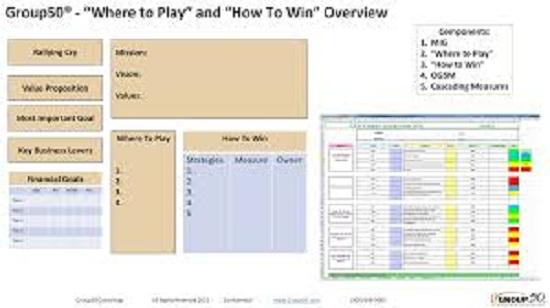Your strategy needs a winning strategy framework to achieve the desired future state

Businesses need a strategy framework in order to achieve their goals and ensure that all teams work towards the same goals. It provides structured approaches to conceptualize, develop, and implement strategic plans, and helps organizations reach their vision and goals. While it gives a structure, a good strategic framework allows for flexibility and adaptation as the circumstances change. There are different models to develop a strategy framework, such as SWOT Analysis (Strengths, Weaknesses, Opportunities, and Threats), Issue-based Strategic Planning, Strategy Mapping, Balanced Scorecard, and more.
The framework typically includes Key Performance Indicators (KPIs) or metrics to track progress and help in consistent decision-making. It can ensure sustainable growth for an organization by balancing short-term and long-term goals, without losing sight of the organization’s core values and objectives. As per Group50 consulting firm, a strategy framework should inform the company’s Most Important Goal (MIG), and should also include OSMG (Objectives, Strategies, Measurements, and Goals), which provide information on detailed metrics on which success will be measured and understanding how they tactically and quantitively contribute to strategic success.
The consulting firm has served a range of industries and clients who have been at their Inflection Point and completed strategic execution projects in over 25 countries. It makes use of over 50 assessments and workshops from Group50’s Company Physical®̥ to assess the current state of the organization and create a roadmap for the future with the client through implementation. “Where to Play” strategy framework by Group50 focuses on the channels of distribution for products and services. “How to Win” is made up of strategies and tactics that are actionable by every part of the organization.
Here are some of the key points of Group50’s Where to Play, and How to Win strategy framework:
Leadership Traits: Actionable leadership traits are a critical foundational part of a company’s culture and need to represent the leadership traits required to move the company from its current state to its future state. These have been explained in detail in the recent book viz. Strategy Realized – The Business Hierarchy of Needs®̥, by Group50’s CEO Jim Gitney.
Rallying Cry: It provides soundbite in the change management process, and a wonderful way to use it as a communication tool and a reminder to all stakeholders of the company’s strategic plan and its objectives.
Value Proposition: It is important, as it articulates the essence of the company’s ability to differentiate itself in the marketplace and provides “Why” customers should buy its products and services.
The Most Important Goal (MIG): It defines what the strategy framework needs to accomplish and can easily define all other metrics.
Key Business Levers: Examples of key business levers include a strong balance sheet, unique unchallengeable IP, commanding market share, advanced OMNI channel technologies, and proprietary manufacturing capabilities or other things they do that create a competitive advantage in the marketplace.
Financial Goals: These helps define a company’s most important goals and create a financial horizon for the organization.
These foundation elements are critical for the success of any strategy framework and provide a benchmark for the effectiveness of all strategies and tactics. The Most Important Goal, Where to Play and How to Win, involve multiple levels of the organization, and these strategy frameworks by Group50 provide the supporting framework and methodologies for designing and achieving strategic success. Without these supporting strategic frameworks, a company may become a victim of Anti-Strategy, and decline.
Comments